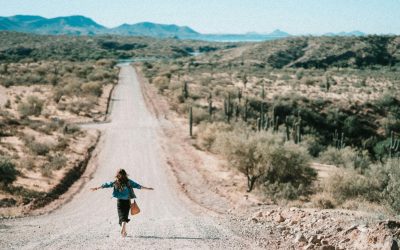When it comes to residential living in Tucson, the Tucson R-1 zoning classification plays a pivotal role in shaping the city’s neighborhoods. This designation is primarily intended for single-family residential units, providing a framework that stipulates how land can be used and what types of structures can be built within these areas. Understanding the nuances of R-1 zoning is essential for homeowners, potential buyers, and developers alike, as it influences not only property values but also community development and lifestyle.
Under the Tucson R-1 zoning regulations, there are specific requirements regarding lot size, building height, setbacks from property lines, and the density of the development. These rules ensure that there is a uniformity in the spacing between houses, which contributes to the overall aesthetic and character of Tucson’s residential zones. Moreover, the R-1 zoning laws help to preserve the quality of life by maintaining low-density housing, which reduces traffic congestion and noise, while also providing ample space for gardens, play areas, and privacy.
For those interested in purchasing property or initiating a construction project in Tucson, familiarizing oneself with the R-1 zoning ordinance is a crucial step. Visit our website to learn more and get started today! Click here.
As Tucson continues to grow and evolve, the R-1 zoning remains a fundamental element that guides the city’s orderly and thoughtful expansion. By adhering to these regulations, the community fosters an environment that is both desirable to live in and respectful of Tucson’s cultural and environmental heritage.
The Significance of R-1 Zoning in Residential Development

The R-1 zoning classification is more than just a set of rules; it is a significant factor that shapes the landscape of residential development in Tucson. By limiting housing to single-family units, R-1 zoning helps to cultivate a certain type of neighborhood dynamic, one characterized by stability, community engagement, and a family-oriented environment. These zones are often sought after by individuals and families looking for a peaceful residential experience, away from the hustle and bustle of multi-family housing and commercial districts.
Moreover, the significance of R-1 zoning extends to the protection of property values. The predictability of what can and cannot be built in these areas provides homeowners with a sense of security, knowing that the character of their neighborhood will be maintained over time. This stability can be a key factor when it comes to real estate investments, as it guards against unexpected changes that could potentially affect the desirability and worth of their homes.
Additionally, R-1 zoning regulations play a crucial role in environmental conservation within residential areas. The lower density requirements allow for the preservation of natural spaces, providing room for landscaping and trees, which in turn contributes to the overall environmental health of the city. This aspect of the zoning laws ensures that urban development is balanced with the need to maintain green spaces and promote biodiversity.
Understanding the implications of R-1 zoning helps stakeholders to make informed decisions about development and investment in Tucson. It’s a key element that supports the city’s vision of sustainable growth, while also ensuring that residential neighborhoods remain tranquil and harmonious places to live.
Navigating Tucson’s Zoning Regulations: A Closer Look at R-1

Navigating Tucson’s zoning regulations requires a closer look at the specific provisions and implications of the R-1 zoning district. This district is primarily intended for low-density, single-family detached homes. The regulations stipulate minimum lot sizes, building height restrictions, and setback requirements, all of which are designed to maintain the character and privacy of these residential neighborhoods.
For instance, the minimum lot size in an R-1 zone is typically larger than that in higher-density zoning districts, providing ample space for yards and outdoor activities. The building height restrictions ensure that homes do not overshadow each other, promoting an open and airy feel within the community. Setback requirements, the minimum distance a building must be from the property line, are put in place to create a sense of openness and maintain privacy between neighbors.
Prospective homeowners and developers must adhere to these regulations when planning to build or modify homes in R-1 zones. Failure to comply can result in legal challenges and may hinder the development process. Therefore, it’s essential to consult with Tucson’s planning and development services to understand the nuances of the zoning code fully.
For those looking to purchase property, understanding the R-1 zoning regulations is also crucial. It informs buyers of what can be expected in the neighborhood and what modifications are possible in the future. This knowledge helps in making an informed decision when investing in residential property in Tucson.
Tucson’s commitment to maintaining the integrity of its residential areas through these zoning regulations reflects the city’s dedication to controlled growth and community wellbeing, ensuring that neighborhoods are designed with residents’ quality of life in mind.
How Tucson R-1 Zoning Impacts Homeowners and Builders

The Tucson R-1 zoning designation has significant implications for both homeowners and builders. For homeowners, the R-1 zoning ensures the preservation of the suburban aesthetic and low-density living, providing a predictable environment in which to live. It offers a level of certainty regarding the possible developments in the neighborhood, protecting their investment and the residential character of their surroundings.
Builders, on the other hand, must navigate these regulations carefully. While the R-1 zone provides opportunities to develop single-family homes, the restrictions on lot coverage, floor area ratios, and height can limit the scale and scope of projects. Builders need to plan meticulously to maximize the utility of the space within these constraints, often working closely with architects and city planners to ensure compliance and to optimize design.
Environmental considerations are also part of the R-1 zoning impact. The limitations on development help to preserve natural landscapes and open spaces, promoting environmental sustainability. This is especially relevant in Tucson, where the unique desert landscapes are a cherished aspect of the region’s character.
For both homeowners and builders, the R-1 zoning can also affect property values. Homes in these zones are often more sought after due to their spacious lots and lower density, which can drive up property prices. Conversely, the restrictions can also limit the potential for rapid growth in equity, as there is a cap on how much one can expand or develop the property.
In summary, Tucson’s R-1 zoning plays a critical role in shaping the city’s residential landscape. It creates a balance between development and preservation, ensuring that the needs of the community, the environment, and the market are all considered in the growth of Tucson’s neighborhoods.
Exploring the Benefits and Limitations of R-1 Zoning
R-1 zoning in Tucson is a double-edged sword, providing both benefits and limitations to the community. One of the primary benefits is the preservation of Tucson’s suburban charm. R-1 zoning regulations maintain low-density residential areas, ensuring that neighborhoods are not overcrowded and that each home has ample yard space. This creates a more relaxed environment, reduces noise, and provides privacy, which can be a major draw for families and individuals seeking a tranquil living space.
Additionally, the R-1 zoning regulations help to protect property values by maintaining the consistency of neighborhood development. Properties in R-1 zones tend to retain their value or even appreciate over time due to the desirability of the area’s characteristics safeguarded by these regulations. There’s also an emphasis on community and neighborhood aesthetics, which can foster a stronger sense of community identity and belonging.
However, the limitations of R-1 zoning should not be overlooked. These restrictions can hinder the development of more affordable housing options by limiting the number of units that can be built on a parcel of land. This can contribute to a shortage of affordable homes, especially for first-time homebuyers or lower-income families. The strict guidelines can also stifle creative architectural designs and limit the ability for homeowners to customize their properties beyond certain parameters, potentially impacting the homeowner’s vision for their dream home.
Moreover, while R-1 zoning supports the preservation of open space and can contribute to environmental conservation, it can also lead to urban sprawl. As the city grows, the low-density requirement can push development outward rather than upward, consuming more land and potentially impacting local ecosystems.
In essence, Tucson’s R-1 zoning is a tool that shapes the city’s growth and character. It brings with it a host of advantages that cater to a high quality of life, but also presents challenges that city planners and residents must navigate to foster a balanced and inclusive community.
Future of Residential Zoning: Trends and Changes in Tucson’s R-1 Zones

Visit our website to learn more and get started today! Click here. As Tucson continues to evolve, the future of residential zoning, particularly within the R-1 zones, is poised for change. Anticipating trends and adjusting to new demands is essential for sustainable city planning. One trend is the increasing need for flexibility in zoning laws to accommodate diverse housing needs. This might include revising R-1 regulations to allow for accessory dwelling units (ADUs), such as granny flats or garage apartments, which can provide more affordable housing options without drastically altering neighborhood character.
Another potential change on the horizon is the integration of eco-friendly building practices and green spaces within R-1 zones. As environmental concerns become more prominent, Tucson might see more incentives for sustainable homebuilding, such as solar panel installations or water-saving landscaping, which could be integrated into zoning requirements.
There is also a trend towards ‘smart growth’ strategies that aim to make efficient use of land while limiting urban sprawl. This could mean a future where R-1 zoning incorporates mixed-use developments that blend residential areas with commercial, cultural, and recreational spaces, fostering walkable communities that reduce the reliance on automobiles.
Transportation advancements may also influence R-1 zoning. With the rise of electric vehicles and improved public transportation, the city could reevaluate parking requirements and street designs to better align with modern transportation needs.
While the specifics of these changes are still unfolding, one thing is clear: a dynamic approach to R-1 zoning is necessary for Tucson to continue thriving. By staying informed and engaged, residents can play a part in shaping the future of their city. For more insights into the future of Tucson’s residential zones and how they might impact you, we invite you to delve deeper into the topic.
Discover more about Tucson’s vibrant community and real estate landscape by visiting our website.






0 Comments